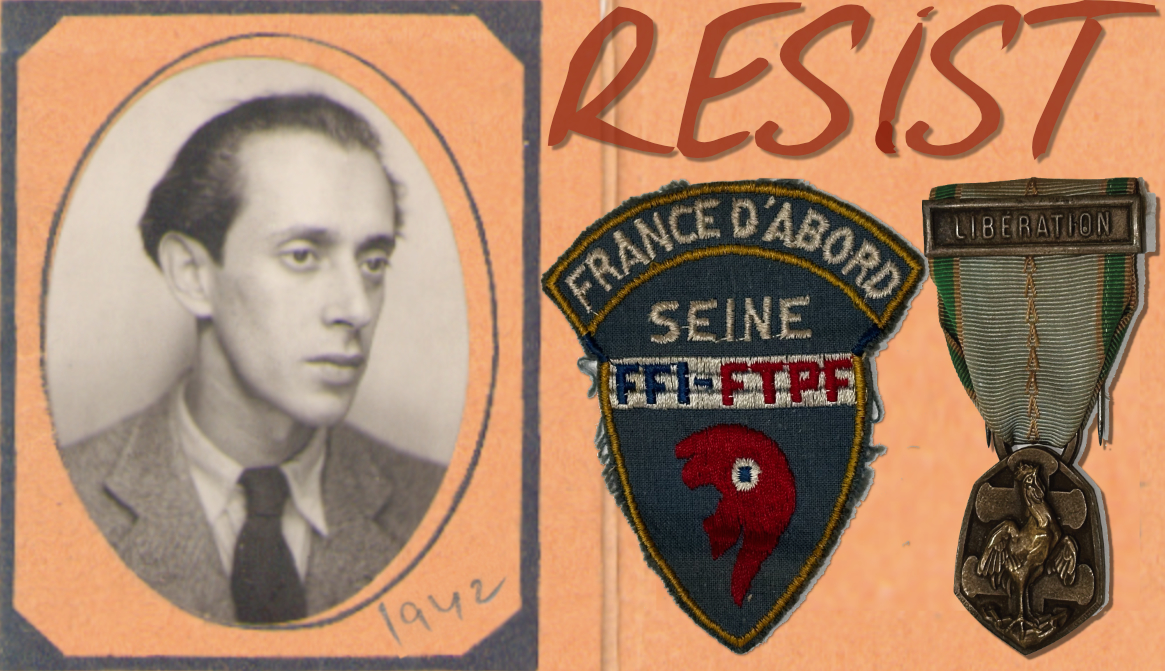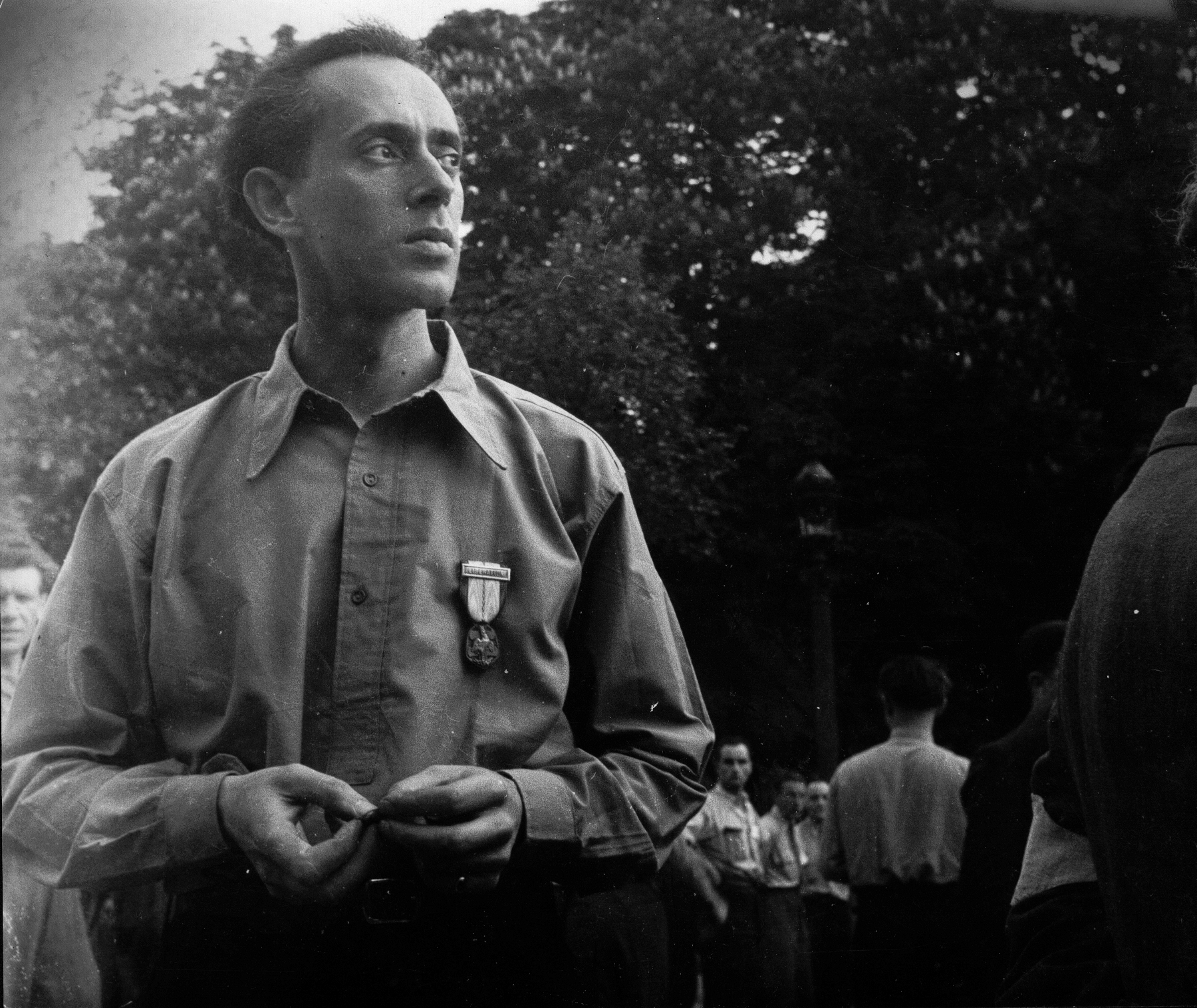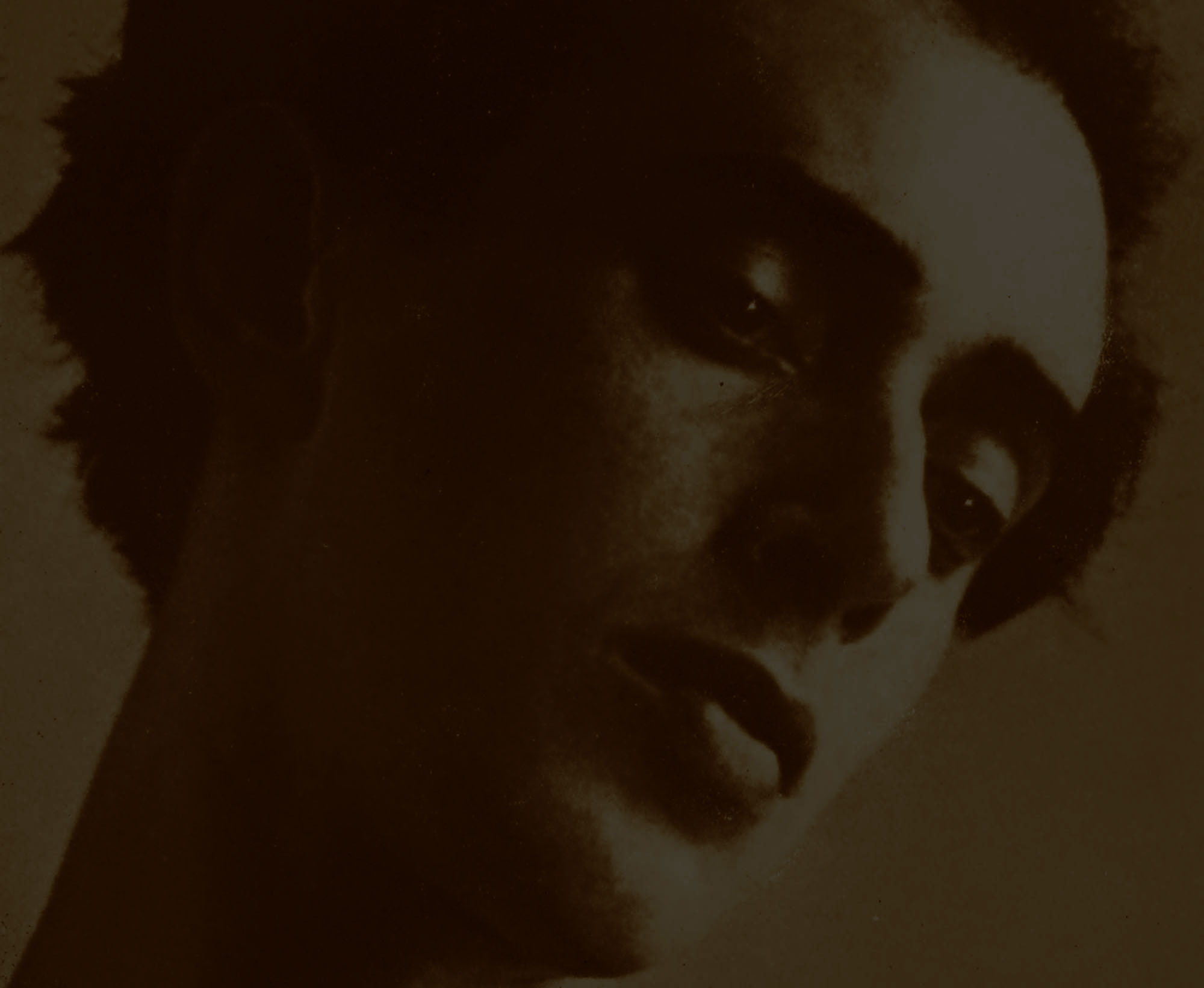Ervin Marton, a Parisian cell of the FTP-MOI…
This page describes what Ervin Marton did in Paris throughout the early forties [it will slowly evolve].
Ervin Marton arrived in France from Hungary in 1938.
Shortly thereafter, WWII started. After having volunteered for the French army, along with many of his artist-friends, he ended up joining the ranks of the FTP-MOI in Paris — It is the very same group whose members were arrested and shot, and were on the so-called “Red Poster” to become the faces cautioned by the authorities to be the actual Résistance in France: “Jews, Communists and Foreigners.” How many amongst them were his friends?
Possibly because of his height, his code-name was “Girafe” (giraffe in English).
He produced false papers and many fliers (distributed by the thousands) and posters, for which he was arrested and interrogated, but ultimately released thanks to the support of some French friends. He also hid three people in his 13th arrondissement studio: screenwriter Henri/Heinrich Oberländer and his French wife, Lulu, (his family visited them after the war in Freiburg where they lived with their daughter Martine), and, in May 1944, the Austro-Hungarian artist, Michael Weiss (who had left the Orgranisation Todt).
The (11) Rue Bellier-Dedouvre street – where he had escaped after being almost arrested 63 Rue Daguerre – ended up being where a great many other Hungarians associated with the FTP-MOI lived, like the architect Károly Perczel, and the artist József Strémi, and many others… To the point that the writer/screemwriter/resistance fighter Jorge Semprun (with whom Ervin Marton corresponded during the war) ended up having a character called Pierre Marton living in Rue Bellier Dedouvre (and another one called Pier Marton in L’Algarabie).
After the war, he became friends with another forger-phoographer – one who had done papers for 14,000 Jews – Adolfo Kaminsky. His daughter Sarah described their meeting: “in a small canteen, 60 rue Claude Bernard in Paris, where many former resistance network members gathered.”
Marton’s particular war experience united other artists.
Later, he went back to Budapest to visit his family but his parents had not survived. After being taken out in the middle of the winter, his father was able to show his WWI medal and was not shot into the Danube with other Jews, but the cold they both caught, during this winter 1944 massacre, killed both of them.
During that visit to Budapest, he described his war years in Paris.
The page “WAR WORKS” is another way to view this narrative.



